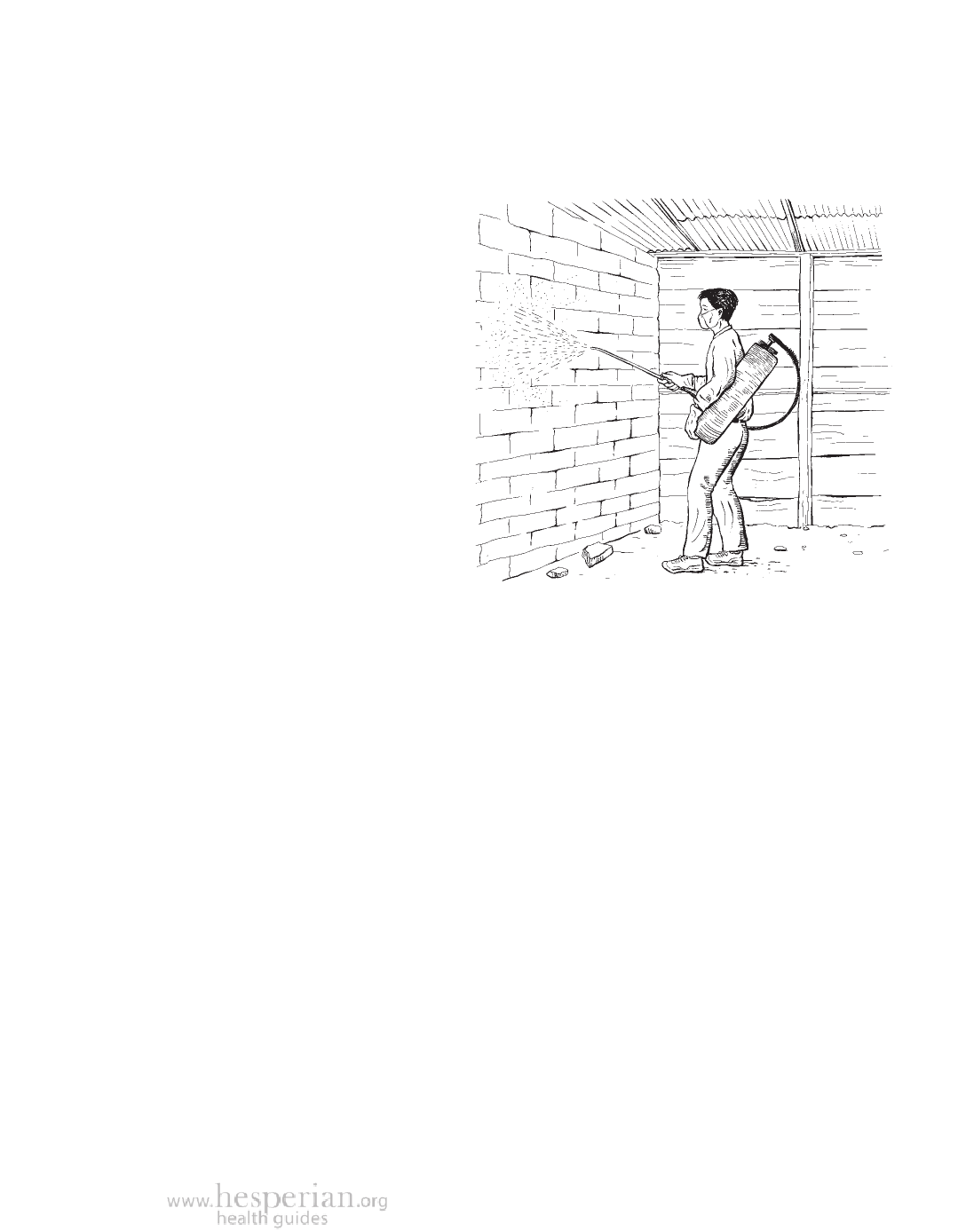
Community Mosquito Control 151
Recently, DDT has come back into use in different ways than before.
It is now recommended only for limited use indoors, in a method called
Indoor Residual Spraying (IRS).
This is spraying small amounts of
DDT on the inside walls of a house
to kill mosquitoes that land there.
This method uses less poison in
a smaller area, prevents it from
entering water sources, and has
less chance of causing mosquitoes
to become resistant.
All insecticides are poisons.
When using DDT, pyrethrins,
or any other insecticide:
• Follow directions and spray
with caution.
• Always wear protective
equipment when spraying
(see Appendix A).
• Use as little of the chemical
as possible. Spray only where
mosquitoes enter the home,
and where they live or rest.
• Never spray near children or
women who are pregnant or breastfeeding.
Insecticides are a short-term
mosquito control measure.
If you must use them, wear
safety equipment.
• Make sure children do not suck or chew on insecticide-treated bednets,
and that they touch the net as little as possible.
• When washing insecticide-treated bednets, use a basin and pour the
wash water into a soakaway pit (see page 82) to protect waterways and
drinking water sources.
Overuse of any insecticide can cause mosquitoes to become resistant to it and
the insecticide will no longer harm them. (To learn more about the dangers of
insecticides and how to use them as safely as possible, see Chapter 14.)
Spraying insecticides is an emergency measure for quick mosquito control.
But insecticides will only reduce mosquito-borne illnesses if they are used
as part of a program that includes treatment for everyone, communitywide
control of mosquito breeding, and community education.
A Community Guide to Environmental Health 2012